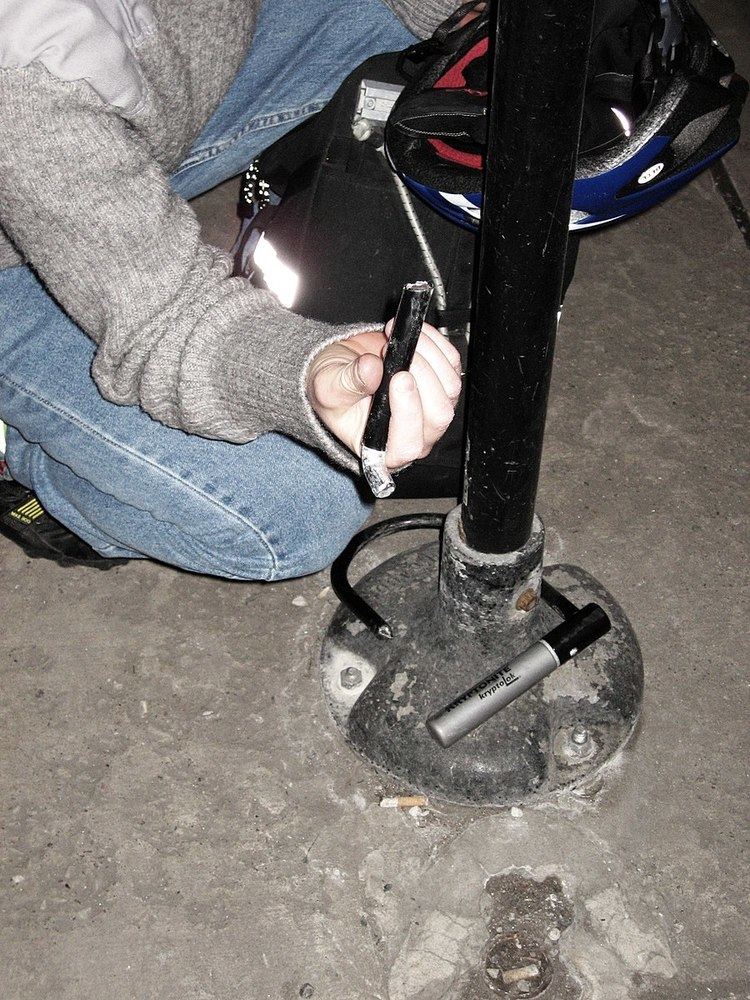 | ||
Bicycle theft is the crime of stealing a bicycle.
Contents
Rates
According to the International Crime Victim Survey (2000), 56% of bicycle thefts across 17 countries were reported to the police. According to an estimate from the NCVS there was an estimated 1.3 million incidents of theft of or theft from bicycles.
Bicycle theft has increased in recent years. According to the British Transport Police, theft and bicycle damage has grown 67% between 1999 and 2005.
The majority of offenders are male under the age of 20, and according to a bicycle theft study in Ellensburg, Washington, approximately 80% of stolen bicycles are stolen for enjoyment or transportation services.
Types of offenders
Although many bicycle thefts occur by offenders looking for financial gain, other offenders can be categorized into the following categories regarding their motivation.
Perpetrator techniques
Those looking to steal bikes can use a variety of different methods in order to do so.
Sucker pole
A sucker pole is a pole that appears to be safe to lock a bike to, but can easily be dismantled by bicycle thieves. It may be a sign, fence, or bike rack that ends in the ground or pavement; such poles are never secured to the base, making vehicles attached to them easy targets. In Chicago, 252 bicycles were stolen in this manner in 2012. Another source says thieves can easily take the parked bike in as little as "10 seconds", in plain view and broad daylight.
Prevention
Bicycle theft is a common crime committed commonly in cities, areas with high population, as well as on college campuses. According to the Police Department at the University of Colorado Boulder, it was found that most of the bicycle thefts that occurred were due to bikes being unlocked, improperly locked, or locked with devices such as a lightweight cable or low-quality U-lock devices.
One can prevent bicycle theft by avoiding using bicycles with quick release wheels, as these are easy for anyone to take off without the use of any tools. Furthermore, one should use a strong U-lock to secure their bike. One should only lock their bike to sturdy structures and should not leave the bike in one place for too long.
The way in which the bike is locked to the structure is also important. It is important that a wheel and the frame of the bike is locked to a structure so that a thief cannot steal a wheel and leave the bike, or vice versa. A former London bike thief recommended small and stiff d-locks, as they are hardest to cut.
